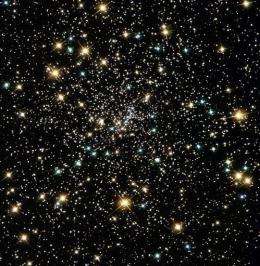LOFAR: World's biggest radiotelescope launched in Netherlands

Scientists in the Netherlands unveiled the largest radiotelescope in the world on Saturday, saying it was capable of detecting faint signals from almost as far back as the Big Bang.
The LOFAR (LOw Frequency ARray) consists of 25,000 small antennas measuring between 50 centimetres and two metres across, instead of a traditional large dish, said Femke Boekhorst of the Netherlands Radioastronomy Institute.
It is based near the northeastern Dutch town of Assen, but the antennas are spread out across the rest of the Netherlands and also in Germany, Sweden, France and Britain.
"Today we have launched the biggest radiotelescope in the world. When you combine all the antennas you get a giant telescope with a diameter of about 1,000 kilometres (600 miles)," Boekhorst told AFP.
"The observations that we will be able to make will allow us to learn more about the origin of the universe, back to the moment right after the Big Bang," she added.
The data gathered by the telescope will be dealt with by a supercomputer at the university of Groningen and then transmitted to the institute.
(c) 2010 AFP
















